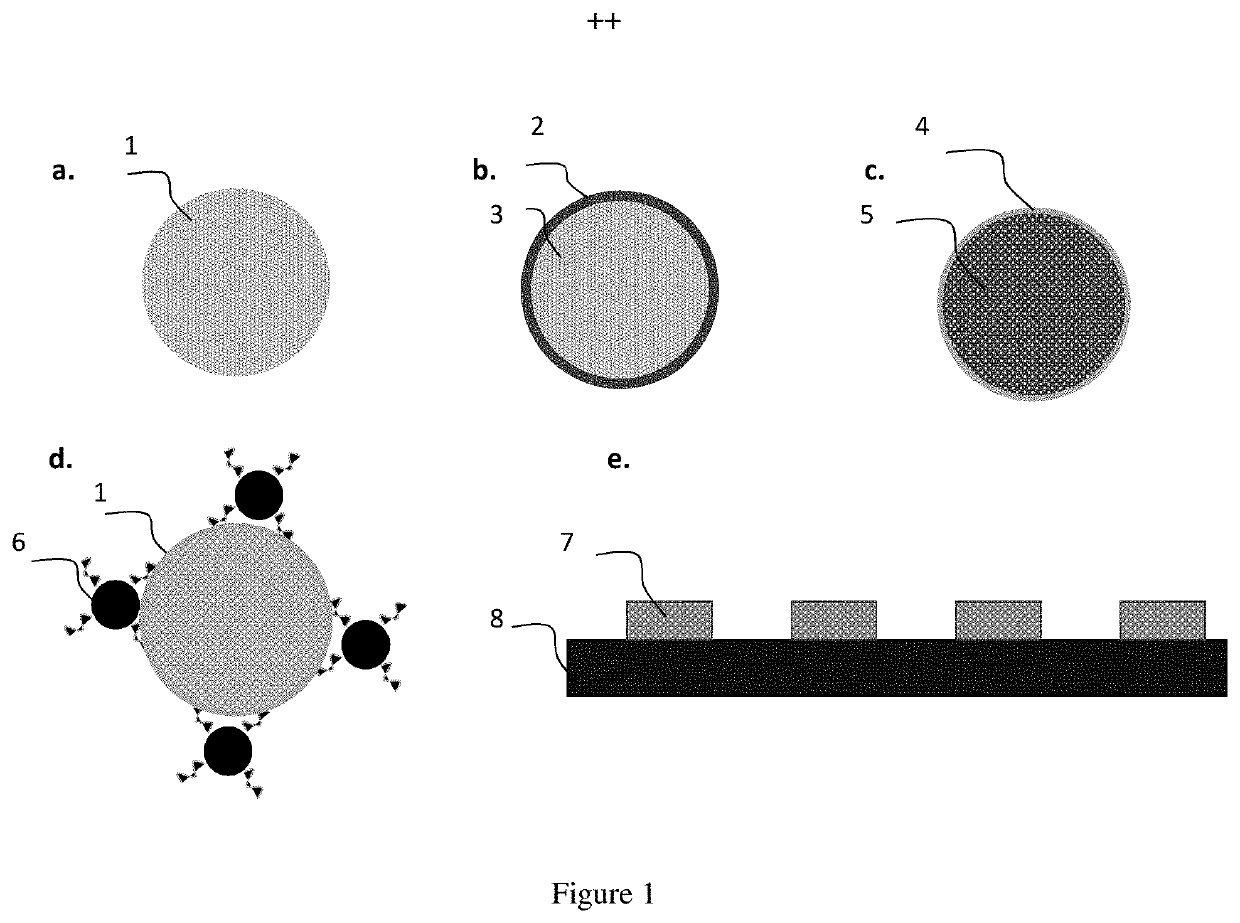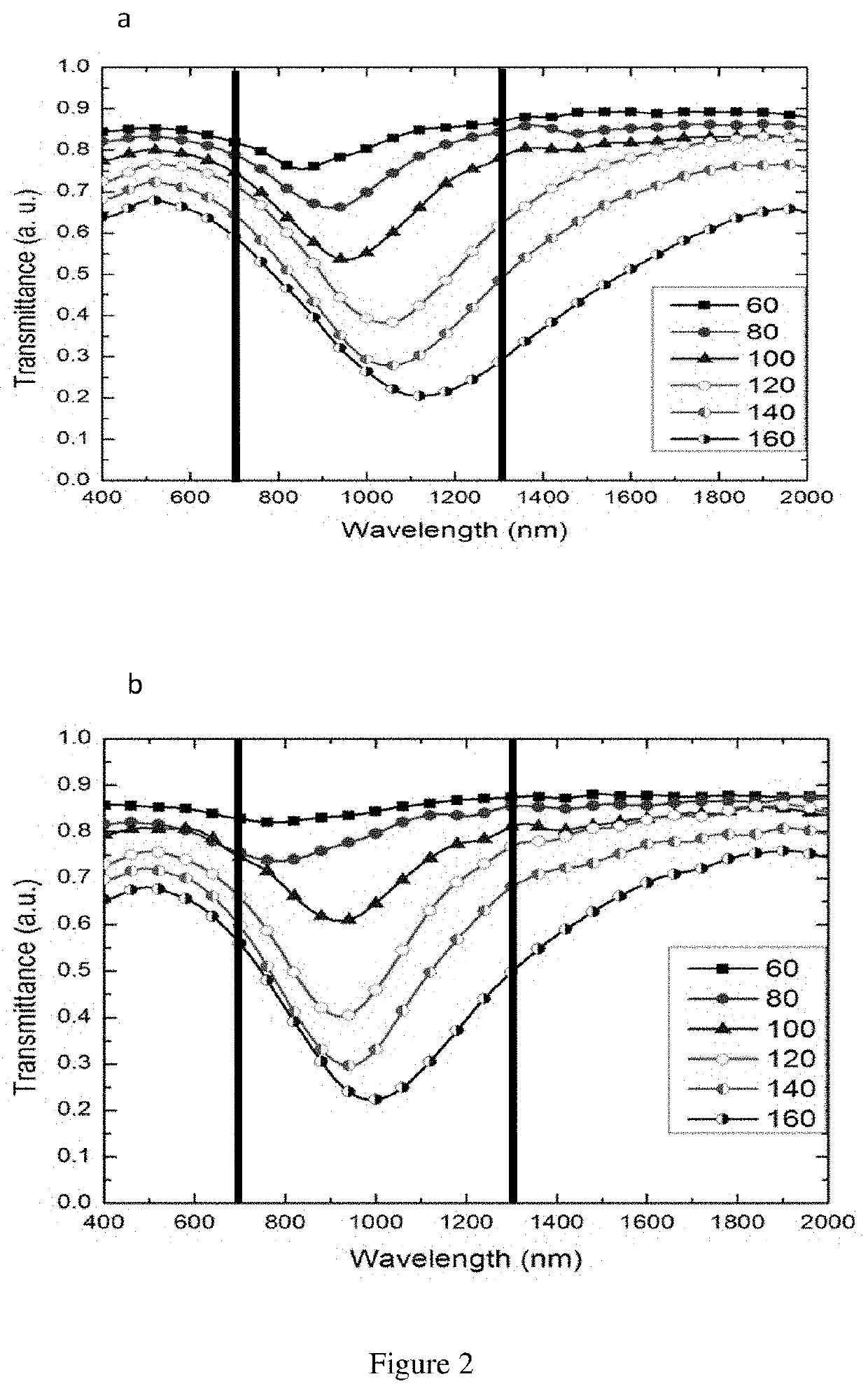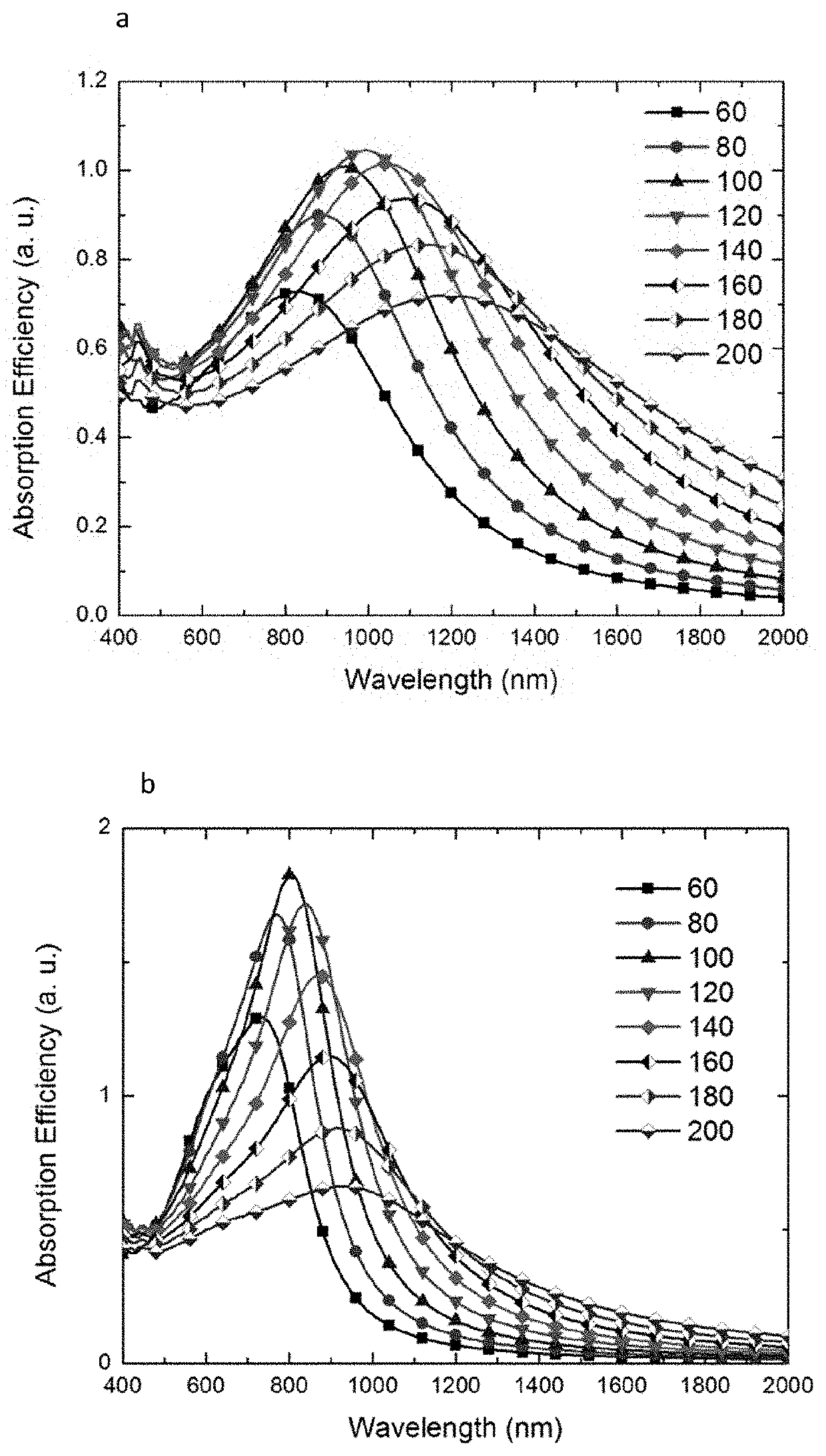Titanium nitride plasmonic nanoparticles for clinical therapeutic applications
a plasmonic nanoparticle and titanium nitride technology, applied in the field of plasmonic technology, can solve the problems of limiting the performance of modern plasmonic devices, gold and silver are still not the best materials to fabricate and integrate into plasmonic devices, and gold and silver do not have optical properties, so as to improve the resonance control
- Summary
- Abstract
- Description
- Claims
- Application Information
AI Technical Summary
Benefits of technology
Problems solved by technology
Method used
Image
Examples
Embodiment Construction
[0024]This invention provides a new approach to nanoparticle-based plasmonic solutions to therapeutic applications by use of titanium nitride (TiN) as the plasmonic material. Employment of TiN nanoparticles in such applications enables usage of particles with simple geometries and small sizes. In addition, the broad resonance characteristics of TiN nanoparticles eliminate the size dispersion restrictions. In current applications where gold (Au) is employed as the plasmonic material, complex shapes and large particle sizes are considered in order to get plasmonic resonances in the biological window. Also, relatively narrower plasmonic peaks with Au create the requirement of having nanoparticles with a very narrow size dispersion. TiN nanoparticles provide plasmonic resonances occurring in the biological window even with small sizes. Local heating efficiencies of TiN nanoparticles outperform currently used Au nanoparticles. The use of smaller particles with simpler shapes and better h...
PUM
| Property | Measurement | Unit |
|---|---|---|
| temperature | aaaaa | aaaaa |
| temperatures | aaaaa | aaaaa |
| melting point | aaaaa | aaaaa |
Abstract
Description
Claims
Application Information
 Login to View More
Login to View More - R&D
- Intellectual Property
- Life Sciences
- Materials
- Tech Scout
- Unparalleled Data Quality
- Higher Quality Content
- 60% Fewer Hallucinations
Browse by: Latest US Patents, China's latest patents, Technical Efficacy Thesaurus, Application Domain, Technology Topic, Popular Technical Reports.
© 2025 PatSnap. All rights reserved.Legal|Privacy policy|Modern Slavery Act Transparency Statement|Sitemap|About US| Contact US: help@patsnap.com



